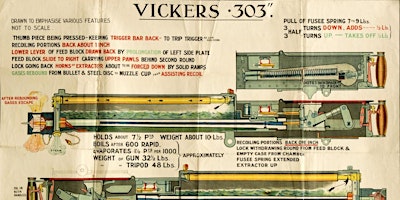Infantry battalions have been the majority of the British Army throughout its existence. There were variations on how an infantry battalion was used depending on the context.
The Great War
At the outbreak of the Great War, the infantry battalion consisted of four companies of four platoons each and included a Machine Gun Section attached to the Battalion Headquarters.

Infantry battalions that were part of the Expeditionary Forces (ie those on active service) were supported by reinforcements as drafts from Reserve and Extra Reserve Battalions. Traditionally these were the 3rd Battalions of Regiments. In December 1914, the war establishment of the Reserve and Extra Reserve Battalions was increased to add an acting serjeant major and an acting quartermaster serjeant when the battalion reached a strength of 2,000 all ranks – showing the size of the reserve battalions when a normal infantry battalion would be less than 1,000 men. The purpose of the two extra N.C.Os. was to look after the recruits while the regimental serjeant-major and regimental quartermaster-serjeant would focus on the trained personnel (Army Council Instruction 207 of 22nd December 1914).
In 1915, the Machine Gun Corps was formed and the Vickers machine guns were replaced with Lewis Guns in the infantry battalion. Brigade Machine Gun Companies were formed in each Infantry Brigade to coordinate and control how machine gunnery was employed. These were replaced by Machine Gun Battalions in 1918.
The Inter-War Period
When the Machine Gun Corps was disbanded in 1922, the machine guns were returned to the infantry battalions. They initially formed a Machine Gun Platoon and then it expanded to a Machine Gun Company with the other three companies of the battalion as rifle companies.
From 1936, the machine gun capability of the infantry battalion was withdrawn and Infantry (Machine Gun) Battalions were formed. At the time, the ‘normal’ infantry battalion was referred to as an Infantry (Rifle) Battalion, consisting of the Headquarters, Headquarter Company and four Rifle Companies.
The Second World War
During the Second World War, only infantry battalions in specific roles used the Vickers machine gun. They included those identified as Divisional (Machine Gun) Battalions, ‘Chindit’ Special Force Battalions, Motor Battalions and Airlanding Battalions.
To understand how the ‘traditional’ infantry battalion was formed and established during the War, the following transcripts of the War Establishments are available as PDF downloads:
- I/1931/8 E/1, 7th May 1941, An Infantry Battalion (Higher Establishment)
- II/1931/12 F/2, 4th June 1941, An Infantry Battalion (Higher Establishment) varies only slightly from the 7th May 1941 issue in that it removes the ‘.45-inch’ calibre from the issue of machine carbines, presumably to allow for the issue of Sten 9mm instead of Thompson .45-inch machine carbines – Table v (Table of weapons and ammunition) still only referred to .45-inch though, possibly in error.
There were sometimes separate war establishments for different theatres. In the Middle East, an infantry battalion consisted of four rifle companies with a headquarters company including and anti-aircraft and anti-tank platoon, with a carrier platoon as well. They didn’t have any Vickers machine guns.
There was also an establishment for a ‘lorried infantry battalion’ which was more mobile, having all of the infantry moved on lorries and the anti-tank company on portee lorries.
The infantry battalion that would become the ‘standard’ for fighting in north-west Europe was introduced in April 1943, with four rifle companies and a support company, the latter being equipped with 3-inch mortars, 6-pounder anti-tank guns and a carrier platoon for integral mobility.
An alternative establishment was provided for ‘A Reserve Infantry Battalion.’ This was the same organisation as a normal infantry battalion yet had a lower permanent establishment with the majority of men being reinforcements to be sent to the regular battalions.
Sources:
- Gudmundson, 2005
- The National Archives, WO 24/036, War Establishments 1939
- The National Archives, WO 24/939, War Establishments 1941 January to June.
- The National Archives, WO 24/946, War Establishments 1943 January to March.
- The National Archives, WO 24/947, War Establishments 1943 April to June.
- The National Archives, WO 293/1, Army Council Instructions 1914.





